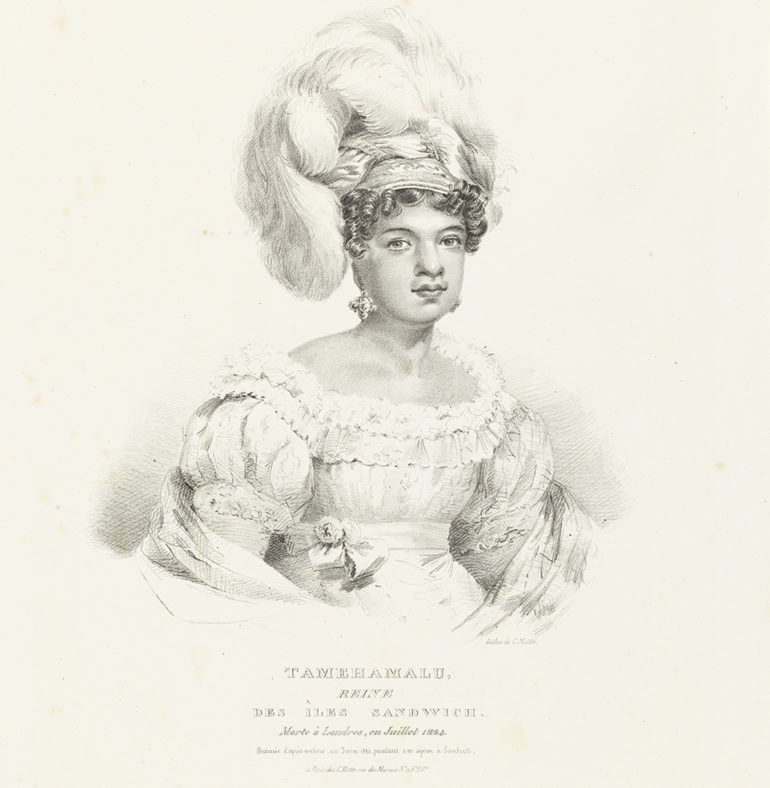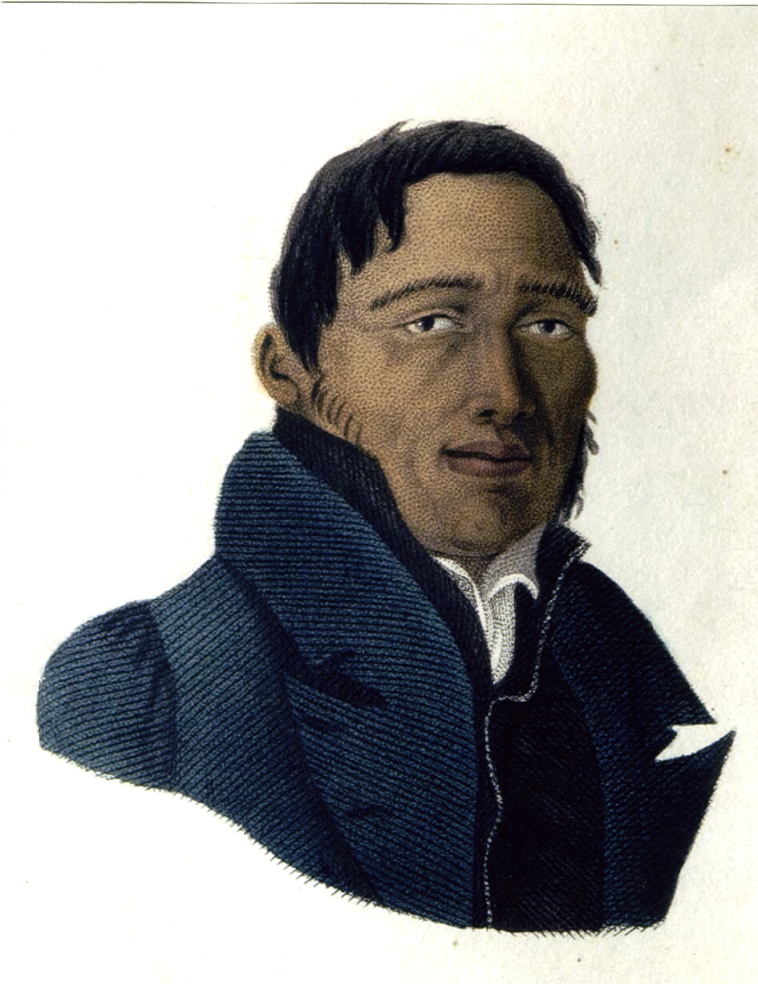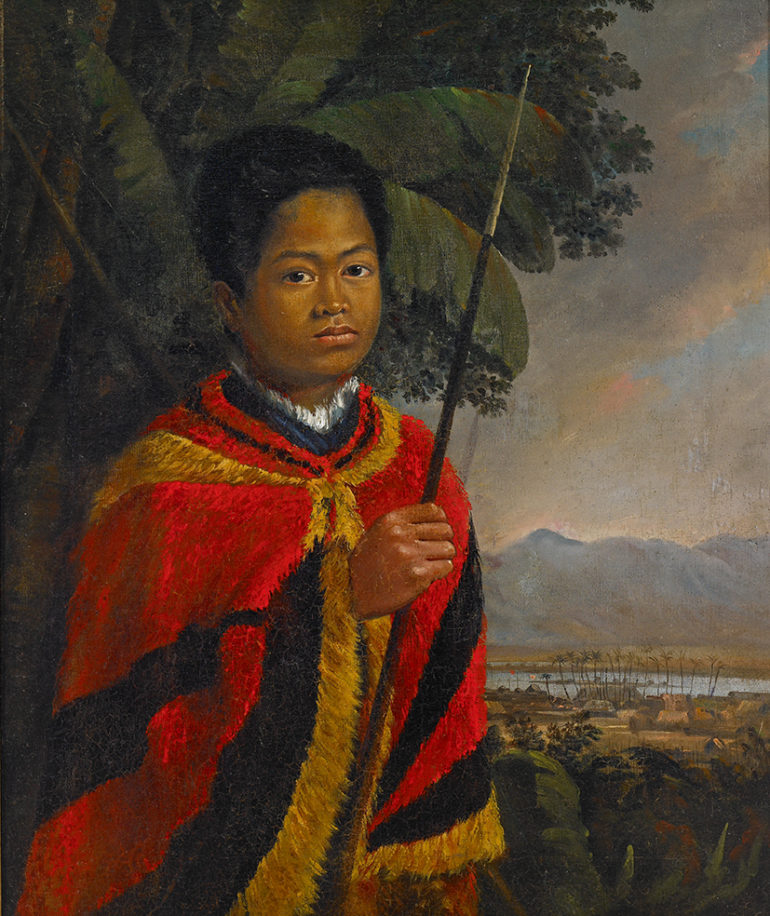Liholiho, as Kamehameha II, is remembered for dismantling the kapu system and permitting the missionaries to stay in Hawai‘i. He also built on the legacy of Kamehameha I by ensuring the unification with Kaua‘i, negotiated in 1810 and finalized by Liholiho’s visit to Kaua‘i in 1821 and kidnapping of Kaumualiʻi.
Liholiho resolved to visit England to reaffirm the Kingdom’s alliance, formed by Kamehameha I and Captain George Vancouver in 1794, and to secure protection against possible foreign invaders. He departed in November 1823 but died before meeting King George IV in London. However, Boki and others of Liholiho’s retinue completed the mission, receiving the reassurance they sought from the king: “I will watch over your country, I will not take possession of it for mine, but I will watch over it, lest evils should come from others to the Kingdom.”1
When Liholiho left for England in 1823, he named his younger brother, Kauikeaouli, as his successor, with Kaʻahumanu continuing as kuhina nui and Kalanimoku as kālaimoku or prime minister. News of Liholiho and Kamāmalu’s passing reached Hawai‘i in March 1825, and in June 1825 Kauikeaouli, only 11 years old, was named Kamehameha III. Given his age, Kaʻahumanu and Kalanimoku continued to lead the Kingdom, extending their influence that began during Kamehameha I’s reign.
Kaʻahumanu and Kalanimoku were both supporters of the missionaries and early advocates for Christianity. But many Hawaiian aliʻi, including Liholiho and Boki, had mixed feelings. The growing alliance of aliʻi and missionaries was based on “an all-encompassing effort on both sides to make Hawai‘i one of the ʻāina naʻauao (enlightened nations). It sometimes appeared that the two understood the words differently. For some of the aliʻi the emphasis was on literacy and recognition by foreign powers that Hawai‘i was a Christian nation. For most missionaries, it meant much more: Hawai‘i would be a kingdom of devout and pious Protestants.”2
After ending the kapu system, many Hawaiians struggled to understand the teaching of Christian missionaries within their traditional beliefs and values. Aliʻi split over how they reconciled these competing ideas. Aliʻi nui Kapiolani’s dramatic defiance of Pele as a demonstration of her strong Christian belief symbolized this ongoing conflict.
Ali‘i did agree on the importance of education. They embraced the establishment of a formalized alphabet for the Hawaiian language so that people could learn to read and write in their own language, and welcomed the introduction of printing, which advanced both education and the ability to set and communicate laws. In 1824, the decision to open up schools to all members of the Kingdom led to an unparalleled transformation in literacy.

Ali‘i Nui Kapi’olani and her husband, Nāihe, orator of the Kingdom, adopted Christianity early. In February 1824, Kapiolani constructed a building to be used by the missionaries in Ka’awaloa, which became a mission station. In December, she determined to demonstrate the strength of her belief in Christianity by walking to Kilauea volcano, which was erupting, and defying the ongoing beliefs in the goddess Pele. Her dramatic and brave act was captured in a poem by British author Alfred, Lord Tennyson.
2 Lyon, Kapali, “Huliāmahi – Aliʻi and Missionary Collaboration During the First Twenty Years of the Sandwich Island Mission,” Woods, Thomas A., ed., Kōkua Aku, Kōkua Mai, Hawaiian Mission Children’s Society, Honolulu, 2018, p. 57.





